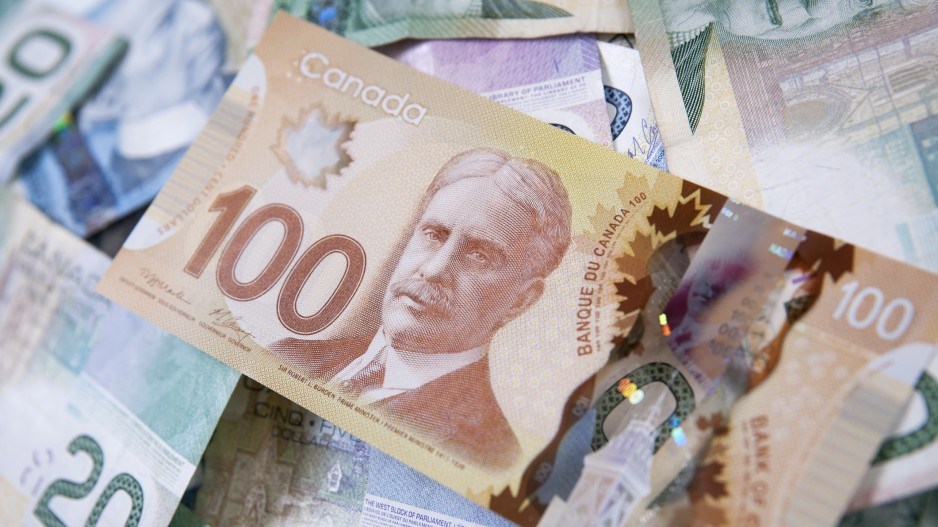OTTAWA — As the Bank of Canada tries to reign in red hot inflation, the central bank is engaging in another fight: one against misinformation.
In recent weeks, the central bank has been using social media to engage the public on the economy, explaining how inflation works and what it's doing to bring inflation back to its two per cent target. However, in its most recent Twitter thread, the bank went beyond explaining economics and took direct aim at a common attack levied against its policy decisions during the pandemic.
“#YouAskedUs if we printed cash to finance the federal gov’t. We didn't,” the Bank of Canada tweeted on Aug. 25, followed by a series of tweets refuting the claim.
While central bank officials normally hold speeches and other events to communicate their thinking and to set expectations, Laval University economics professor Stephen Gordon says its audience has traditionally been smaller than it is today.
“The only people who pay attention are insiders and market experts. And that's usually the only people that they have to talk to,” Gordon said.
Today’s high inflation environment and the politicization of the central bank has led to a wider audience, with more Canadians concerned about rising interest rates and the high cost of living. Alongside this heightened interest has also come a level of distrust of the Bank of Canada's operations and a misperception that it printed money during the pandemic.
Conservative leadership front-runner Pierre Poilievre has been a loud critic of the Bank of Canada, vowing to fire Governor Tiff Macklem if he becomes prime minister. Poilievre has not explained how he plans to fire Macklem given the Bank of Canada Act does not provide the federal government with that power.
He’s also repeatedly claimed that the central bank printed money to finance federal spending and therefore caused inflation.
pression of the bank printing money whenever they engage in these kinds of policies, but it's not actually what happens,” said Jeremy Kronick, the director of Monetary and Financial Services Research at the C.D. Howe Institute.
The policy Kronick refers to is quantitative easing, a measure the Bank of Canada attempted to explain in a series of tweets.
“We bought existing gov't bonds from banks on the open market. Why? This helped unblock frozen markets at the start of the pandemic. It let households, companies and governments access funding when they really needed it,” one of the tweets said.
“We did not print cash to pay for the bonds,” the thread went on to say.
Sometimes referred to as QE, quantitative easing is a relatively new tool used to keep money flowing when interest rates are already hovering around zero and can't be cut further. It garnered worldwide attention when it was used by the U.S. Federal Reserve in the aftermath of the 2008 financial crisis.
The Bank of Canada used this policy tool for the first time when the pandemic hit to fight off the risk of deflation. It bought government bonds from financial institutions using settlement balances, or reserves, that it deposited into the accounts of financial institutions and paid interest on. As the bank stated, these reserves are not the same as cash.
“That purchase of the bond lowers the interest rate on that bond and therefore lowers other interest rates, which makes it cheaper to borrow for you and me. So that's really where QE has its impact, not so much from the exchange,” Kronick said.
The Bank of Canada began the process of quantitative tightening, where bonds are sold back to financial institutions or allowed to mature without being replaced, in April of this year. The central bank has opted for the latter option.
While the Bank of Canada’s motivation to speak directly with Canadians and justify its policies is understandable, Gordon says he’s unsure how effective its efforts are given the central bank doesn’t have much experience in this realm.
“They don't have nowhere near the media arsenal of the people who are trying to promote the wrong agenda. So, they're in some sense massively outgunned,” he said.
A recent Angus Reid survey found 46 per cent of Canadians trust the Bank of Canada to fulfil its mandate, while 41 per cent said they don’t. The survey found distrust was higher among people who had voted for the Conservatives or the Peoples Party of Canada.
The online poll surveyed 5,032 Canadian adults and was conducted between June 7 and 13. It cannot be assigned a margin of error because according to the polling industry's generally accepted standards, online surveys do not randomly sample the population.
Looking ahead, the Bank of Canada plans to expand its educational programming on the economy and the bank's role.
Kronick meanwhile says what will ultimately help foster trust in the Bank of Canada is bringing inflation back down to target.
“What matters and what will regain that trust is the bank getting inflation back under control."
This report by The Canadian Press was first published Aug. 31, 2022.
Nojoud Al Mallees, The Canadian Press




